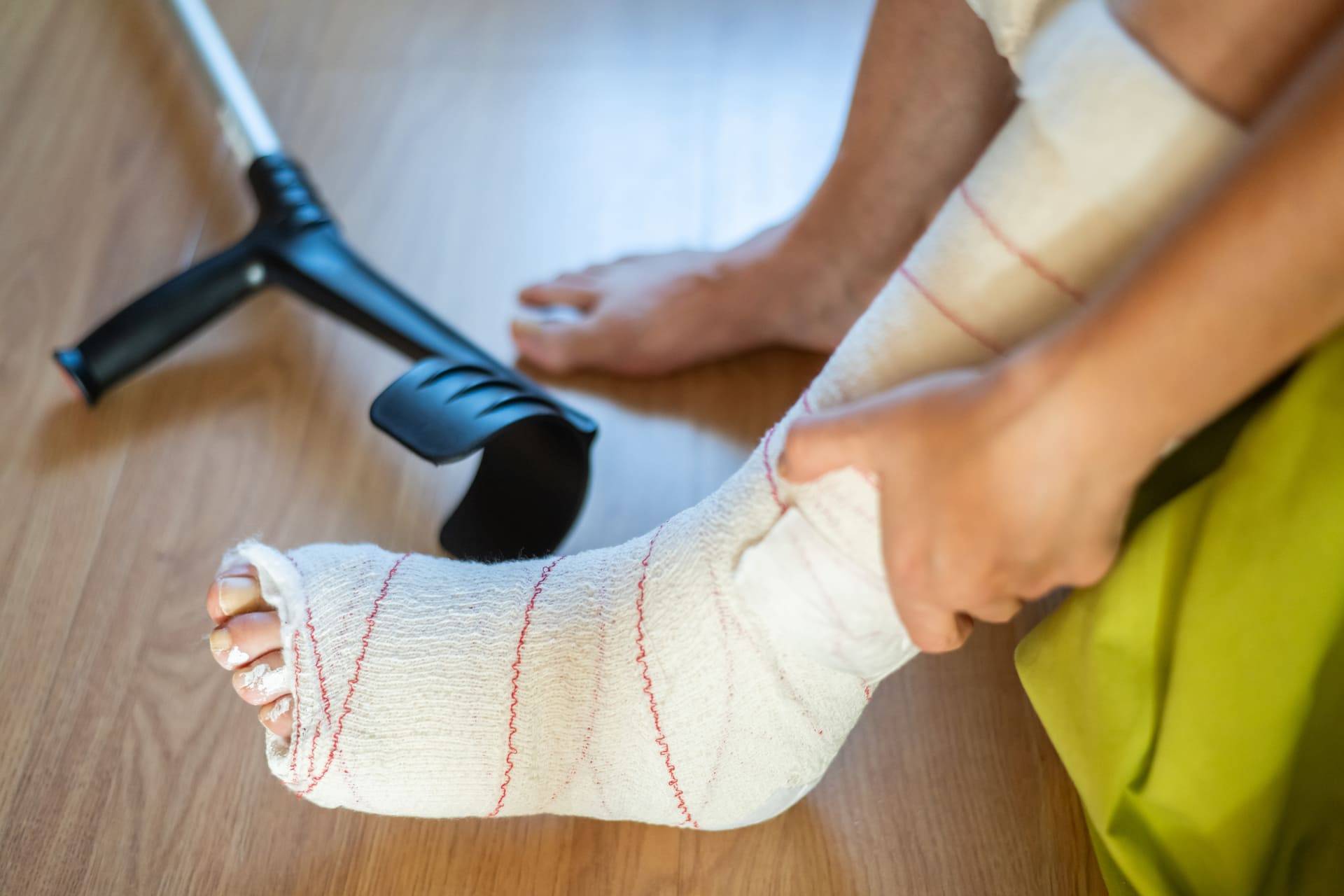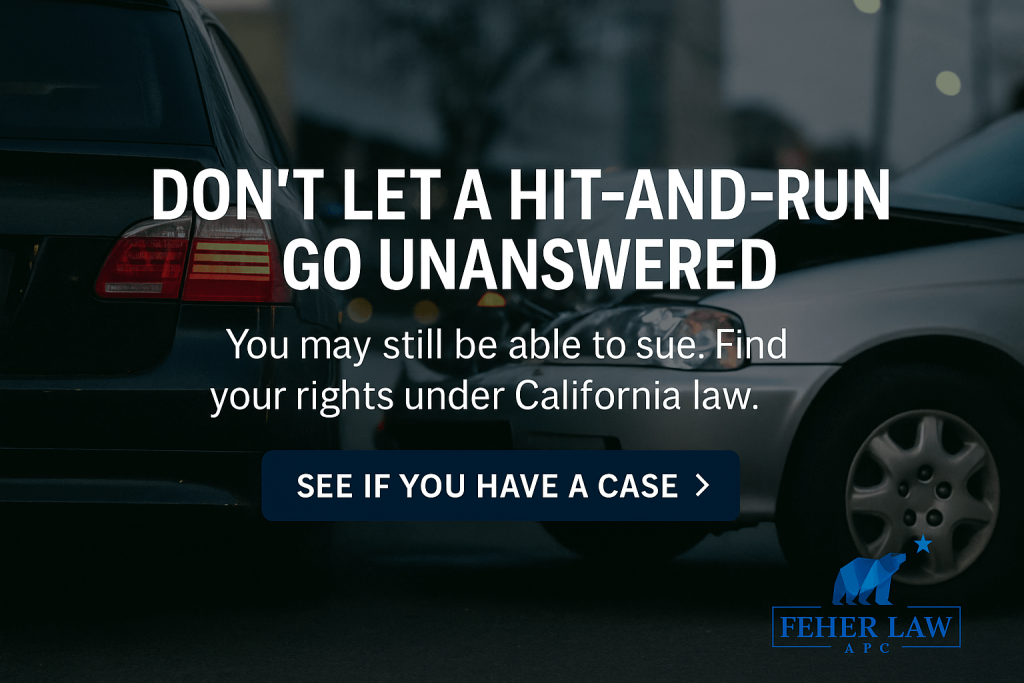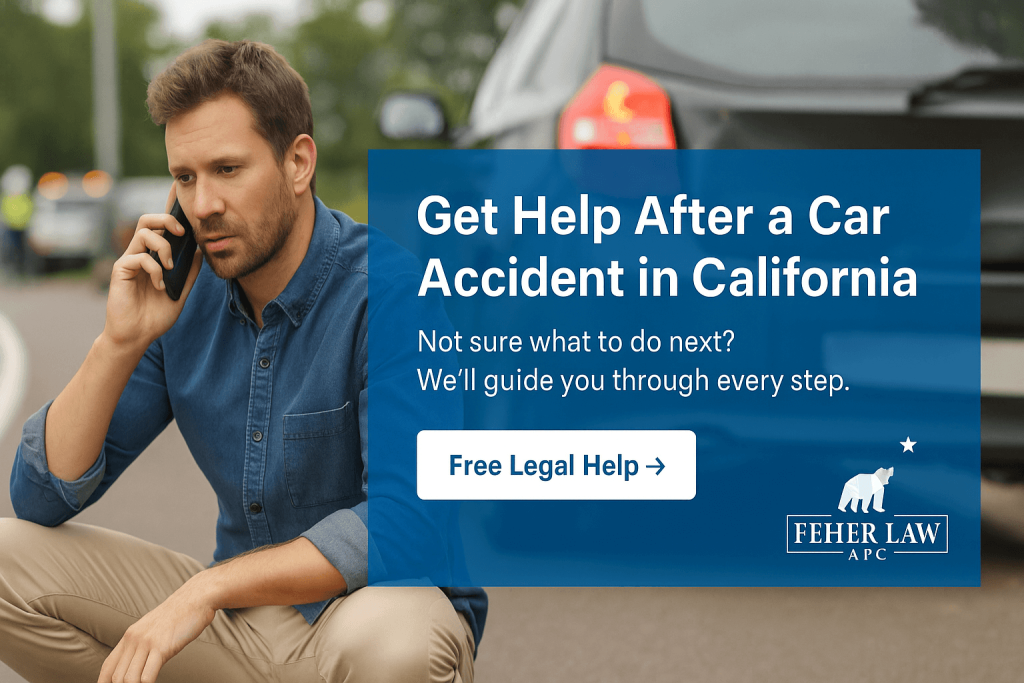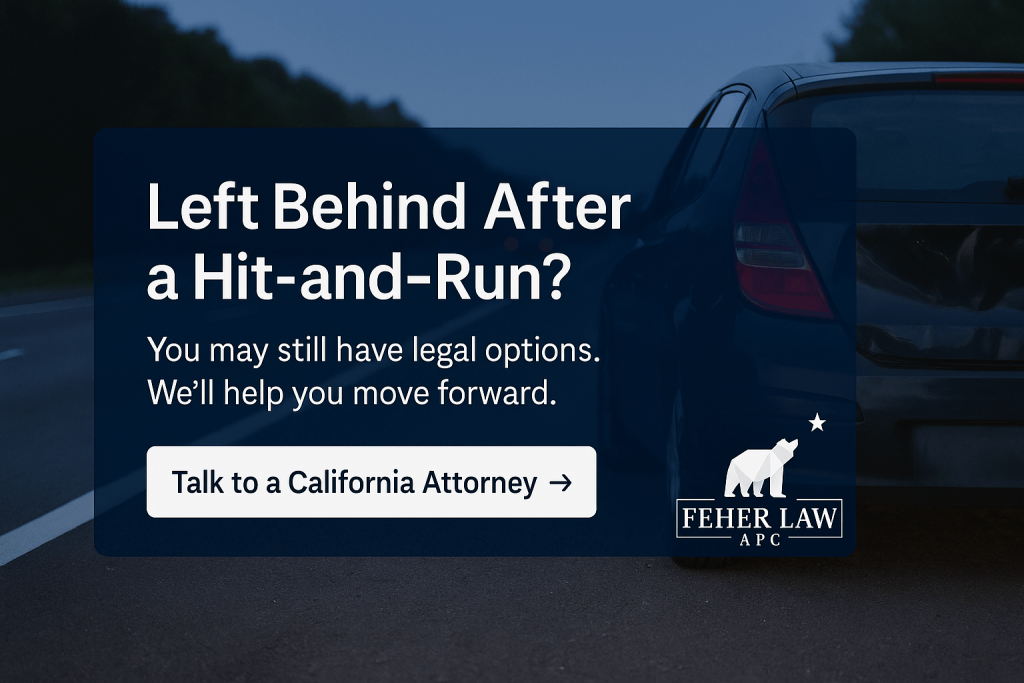Can I Sue a Hit and Run Driver in California?
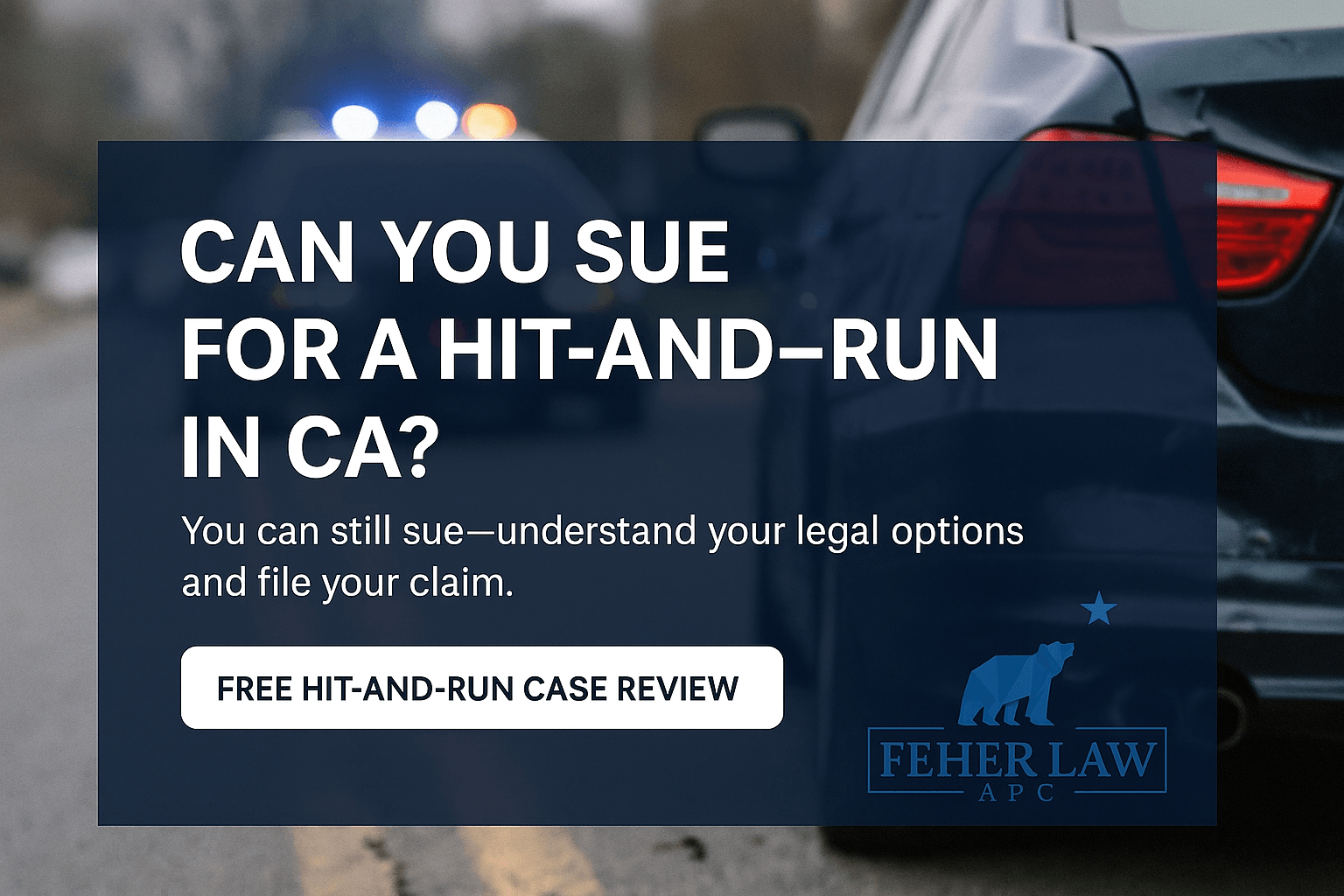
Yes, you can sue someone for a hit-and-run in California. If a driver hits you and leaves the scene, you can take legal action against them. This can help you get money to pay for your medical bills, car repairs, and other expenses caused by the accident.
However, doing this on your own can be a daunting prospect.
A knowledgeable attorney from our firm can guide you through the process of filing a lawsuit and help you understand your rights under California law.
By pursuing legal action, you can hold the responsible party accountable and obtain the financial support needed to recover from the impact of the hit-and-run.
What is classed as a “hit-and-run” accident in California?
A hit-and-run accident in California is when a driver involved in a collision leaves the scene without stopping to give their information or help anyone injured. Under California law, drivers must stop immediately after an accident, provide their name, address, and vehicle registration number, and show their driver’s license if asked.
They must also report the accident to local police if there are any injuries or deaths. If someone is hurt, drivers must help by calling 911 and, if needed, getting the injured person to a hospital.
Not following these rules can lead to severe consequences like fines, jail time, and losing their driver’s license.
How to sue for a hit-and-run in California
If you’re a hit-and-run victim in California, the following specific steps can help you sue the responsible driver and seek compensation for your losses:
- Identify the At-Fault Driver: One of the biggest challenges is identifying the driver who fled the scene. Start by gathering as much evidence as possible, such as witness statements, photographs, and any available video footage from nearby cameras — see more guidance below!
- Involve the Police and Private Investigators: The police’s role is critical in a hit-and-run case. Report the accident immediately, as the police will file an official report and start an investigation to find the driver.
- File a Civil Lawsuit: Once the at-fault driver is identified, you can file a civil lawsuit to seek compensation. This includes medical expenses, property damage, lost wages, and pain and suffering.
Consult a Torrance car accident lawyer from our firm to help seek justice.
Complete Hit-and-Run Lawsuit Process Guide
Filing a successful hit-and-run lawsuit requires strategic planning and precise execution:
Phase 1: Investigation and Case Building (Months 1-3)
Driver Identification:
- Coordinate with police investigation
- Hire private investigators if needed
- Analyze surveillance footage from multiple sources
- Interview witnesses and gather statements
- Examine physical evidence and vehicle debris
Damage Documentation:
- Compile all medical records and treatment plans
- Calculate lost wages and future earning capacity
- Document property damage and repair costs
- Assess pain and suffering impacts
- Determine long-term disability or impairment
Phase 2: Insurance Negotiations (Months 2-6)
Pre-Litigation Strategy:
- File comprehensive demand letter with supporting evidence
- Present medical documentation and expert opinions
- Calculate total damages including future costs
- Negotiate with defendant’s insurance carrier
- Explore policy limits and coverage availability
Uninsured Motorist Claims (if driver unidentified):
- File claim with your insurance company
- Provide complete evidence package
- Negotiate fair settlement value
- Appeal lowball offers with additional evidence
Phase 3: Formal Litigation (Months 6-18)
Filing the Lawsuit:
- Draft and file complaint in appropriate California court
- Serve defendant with legal papers
- File in Los Angeles Superior Court, Orange County Superior Court, or appropriate jurisdiction
- Begin formal discovery process
Discovery Phase:
- Depositions of all parties and witnesses
- Medical examinations and expert evaluations
- Document production and evidence exchange
- Investigation of defendant’s assets and insurance
Phase 4: Resolution (Months 12-24)
Settlement Negotiations:
- Mediation with neutral third party
- Direct negotiations with defense counsel
- Present compelling evidence package
- Leverage criminal conviction if applicable
Trial Preparation:
- Expert witness preparation
- Exhibit creation and organization
- Jury selection strategy
- Opening and closing argument development
Steps to take after a hit-and-run
If you’re involved in a hit-and-run accident, taking the proper actions can help protect your rights and increase the chances of finding the responsible driver. Here’s what you need to do:
- Immediate Actions: Right after the accident, prioritize your safety and the safety of others. Stay at the scene—this is key. Check for injuries and call 911 if medical assistance is needed. Report the accident to the police immediately; their official report will be vital for legal and insurance claims.
- Gathering Evidence: Collect as much evidence as possible to help identify the at-fault driver. Take photos of the scene, including damage to your vehicle and any other property. Look for surveillance cameras in the area that might have captured the incident. Talk to witnesses and get their contact information and statements about what they saw. This information can be invaluable in tracking down the hit-and-run driver.
- Seek Legal Support: Having expert legal support on your side after a hit-and-run accident will make everything smoother for you, from gathering evidence, handling the claim, and communicating with the insurance company.
- Reporting to Insurance: Provide them with all the details and evidence you’ve gathered. Your insurance policy may include coverage for hit-and-run incidents, such as uninsured motorist coverage, which can help with expenses while the search for the other driver continues.
Additional reading: what to do after a car accident that’s not your fault in California
Evidence Gathering Checklist
Gathering comprehensive evidence immediately after a hit-and-run significantly improves your chances of identifying the driver and recovering compensation:
1. At the Scene
- Vehicle Information: License plate (even partial), make, model, color, distinguishing features
- Driver Description: Age, gender, clothing, physical characteristics
- Damage Documentation: Photos from multiple angles showing all vehicle damage
- Scene Photography: Road conditions, traffic signs, skid marks, debris
- Witness Information: Names, phone numbers, and brief statements from anyone who saw the accident
- Environmental Factors: Weather conditions, lighting, traffic volume
2. Immediate Actions
- 911 Call: Report to police immediately – request report number
- Medical Attention: Document all injuries, even minor ones
- Insurance Notification: Contact your insurer within 24 hours
- Surveillance Search: Identify nearby cameras at businesses, traffic lights, or residential properties
3. Follow-Up Evidence
- Security Footage: Contact nearby businesses within 48 hours (many systems overwrite after 72 hours)
- Social Media: Check local community groups where witnesses might post information
- Return Visits: Go back to the scene at the same time of day to look for regular witnesses like commuters
- Medical Records: Maintain complete documentation of all treatment and expenses
Our legal team often uncovers additional evidence that police investigations miss. We work with private investigators and forensic experts to build the strongest possible case for our clients.
What if you can't identify the driver immediately?
Identifying a hit-and-run driver can be challenging, but there are several steps you can take to identify them and seek compensation:
Identifying a hit-and-run driver
- Gather Information at the Scene: Write down everything you remember about the vehicle (make, model, color, license plate number, and any distinguishing features) and the driver (gender, approximate age, clothing). If possible, take photos of the scene, your vehicle’s damage, and any other relevant details. Also ask any bystanders if they saw the incident and if they can provide any details about the vehicle or driver. Get their contact information in case they need to provide a statement later.
- Report to the Police: Report the incident to the police as soon as possible. Provide them with all the information you have gathered and get a copy of the report for your records
- Check for Surveillance Cameras: Look for any nearby businesses or traffic cameras that might have captured the incident. Contact the business owners or the city to request access to the footage.
- Social Media and Online Platforms: Sometimes, witnesses or other drivers who saw the hit-and-run might come forward with information.
- Consult with a Private Investigator: If the police are unable to locate the driver, consider hiring a private investigator who specializes in hit-and-run cases
Getting compensation if you can’t identify the driver
- Contact Your Insurance Company: If you have uninsured motorist coverage, it may cover damages and injuries resulting from a hit-and-run accident. In addition, collision coverage can cover repairs to your vehicle regardless of fault, but you will need to pay your deductible.
- MedPay Coverage: If you have medical payments coverage, it can help pay for medical expenses incurred due to the accident, regardless of fault.
- PIP Coverage can help cover medical expenses, lost wages, and other related costs.
- File a Claim with CalVCB: This state-run program provides financial assistance to victims of violent crimes, including hit-and-run incidents. You can apply for compensation for medical bills, counseling, and other expenses.
- Legal Advice: You should still speak with a personal injury attorney to guide you through the process of seeking compensation and represent you in negotiations with insurance companies.
Additional reading: average whiplash settlement
Wondering What Your Hit-and-Run Claim Might Be Worth?
If you’ve been injured in a hit-and-run and are unsure what kind of compensation you might receive, our hit-and-run settlement calculator can help. It gives you a quick estimate based on key factors like your medical bills, lost income, property damage, and pain and suffering. Whether you’re dealing with short-term injuries or facing a long recovery, this tool provides insight into the value of your claim—even if the at-fault driver hasn’t been found yet.
Using the calculator is simple: just input your medical expenses, projected future costs, income losses, and more. It even accounts for non-economic damages like emotional distress and your percentage of fault in the accident. Try it now to get a clearer picture of what your claim may be worth—and take the first step toward securing the compensation you deserve.
Disclaimer: The result from this calculator does not constitute legal advice and should only be used as an estimate.
Selected Value: 0%
Common Causes of Hit-and-Run Accidents
The most common reasons include:
- Impaired Driving: Drivers under the influence of alcohol or drugs often panic and flee to avoid DUI charges. California’s strict DUI penalties make this a primary motivation for fleeing.
- No Insurance Coverage: Uninsured drivers may leave the scene to avoid financial responsibility. With California requiring all drivers to carry minimum insurance, those without coverage face significant penalties.
- Suspended or Revoked License: Drivers operating without valid licenses flee to avoid additional legal consequences that could result in extended license suspension or jail time.
- Outstanding Warrants: Individuals with existing legal issues may panic and leave rather than face arrest at the scene.
- Fear and Panic: Some drivers, particularly young or inexperienced ones, make poor decisions in the heat of the moment and flee without considering the consequences.
- Vehicle Theft: Drivers operating stolen vehicles will almost always flee to avoid immediate arrest.
Regardless of the reason, fleeing the scene only makes matters worse for the at-fault driver and leaves victims to deal with the aftermath alone.
Your rights as a victim
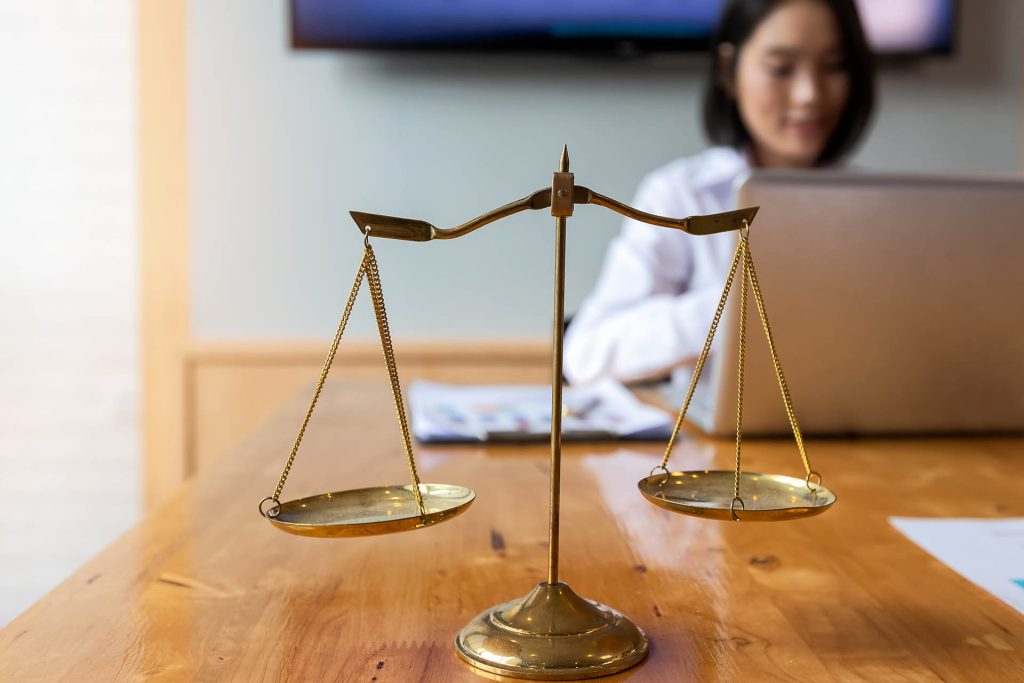
If you’re a victim of a hit-and-run accident, you have several rights that can help you seek justice and compensation for your losses, including your right to sue.
You can sue the at-fault driver for damages in civil court and seek compensation for various damages that can help you recover financially and emotionally from the accident. These include:
- Medical Expenses: Costs for immediate and future medical treatment related to the accident.
- Lost Wages: Income lost because of your inability to work due to injuries.
- Pain and Suffering: Compensation for physical pain and emotional distress caused by the accident.
If the driver responsible for the hit-and-run remains unidentified, recovering damages can be more challenging. This is where uninsured motorist (UM) coverage steps in.
This coverage is part of your insurance policy and can cover your medical bills and property damage when the other driver is uninsured or unidentified. It’s important to review your insurance policy to understand your UM coverage. If you don’t have this coverage, consider adding it for future protection.
For detailed information on your legal rights and the compensation process, refer to the California Department of Insurance for guidance on handling hit-and-run accidents and insurance claims.
Additional reading: how much can someone sue for a car accident
Criminal and civil ramifications for the at-fault party
When a driver commits a hit-and-run, they can face both criminal charges and civil liabilities. The at-fault driver can be prosecuted by the state and face serious legal repercussions. These penalties depend on the severity of the accident:
- Misdemeanor Hit-and-Run: If the accident only involved property damage, the driver can be charged with a misdemeanor. Penalties can include up to six months in jail, fines up to $1,000, and points on their driving record.
- Felony Hit-and-Run: If the accident resulted in injury or death, the driver can be charged with a felony. Penalties can include significant prison time (up to four years or more), substantial fines, and a lengthy suspension or revocation of their driver’s license.
Separate from criminal penalties, the at-fault driver can also be held liable in civil court. As a victim, you can file a lawsuit to seek compensation for various damages, ranging from property repair costs to emotional distress, as discussed above.
Both criminal and civil proceedings can occur simultaneously, but they serve different purposes: criminal penalties aim to punish and deter the offender, while civil compensation seeks to make the victim whole.
Here’s a summary of the key differences:
| Aspect | Criminal Penalties | Civil Compensation |
| Purpose | Punishments imposed by the state to penalize the at-fault driver for breaking the law. | Financial restitution awarded to the victim to cover their losses and help them recover from the accident. |
| Goal | To enforce justice and deter future offenses. | To compensate the victim for their damages. |
| Initiation | Prosecuted by the government. | Initiated by the victim. |
| Penalty/Outcome | Jail time, fines, and other sanctions. | Compensation paid by the at-fault driver or their insurance company to the victim. |
Additional reading: wrongful death settlements in car accidents
How Criminal and Civil Cases Interact in a Hit-and-Run Lawsuit
Many hit-and-run victims don’t realize that criminal and civil cases proceed simultaneously but serve different purposes. Here’s how they work together:
Criminal Case (State vs. Driver)
- Purpose: Punish the offender and deter future crimes
- Initiated By: District Attorney’s office
- Standard of Proof: Beyond a reasonable doubt
- Outcome: Fines, imprisonment, probation
- Victim Role: Witness for the prosecution
Civil Case (Victim vs. Driver)
- Purpose: Compensate the victim for damages
- Initiated By: Injured victim (through attorney)
- Standard of Proof: Preponderance of evidence (easier to prove)
- Outcome: Monetary compensation
- Victim Role: Plaintiff seeking damages
How They Support Each Other
A criminal conviction significantly strengthens your civil case because:
- Established Liability: Criminal conviction proves the defendant’s fault
- Evidence Preservation: Police investigation creates documented evidence
- Witness Testimony: Criminal proceedings may uncover additional witnesses
- Driver Identification: Criminal case helps locate and identify the fleeing driver
Important Note: You can pursue civil compensation even if criminal charges are never filed or result in acquittal. The burden of proof is lower in civil court.
Hypothetical Scenario: A hit-and-run driver is criminally convicted of felony hit-and-run after striking a cyclist. This conviction makes it much easier to prove liability in the civil case, where the victim seeks compensation for medical bills, lost wages, and pain and suffering.
Hit-and-Run California Laws
California takes hit-and-run offenses seriously, with penalties varying based on the severity of the incident. The legal framework is established under California Vehicle Code Sections 20001 and 20002.
Misdemeanor Hit-and-Run (Property Damage Only)
When a hit-and-run involves only property damage, it’s charged as a misdemeanor under Vehicle Code Section 20002. Penalties include:
| Penalty Type | Consequence |
|---|---|
| Jail Time | Up to 6 months in county jail |
| Fines | Up to $1,000 plus court costs |
| License Points | 2 points added to driving record |
| Probation | Up to 3 years informal probation |
| Community Service | Typically 100-200 hours |
Felony Hit-and-Run (Injury or Death)
When a hit-and-run results in injury or death, it becomes a felony under Vehicle Code Section 20001. The consequences are severe:
| Penalty Type | Consequence |
|---|---|
| Prison Time | 2-4 years in state prison |
| Enhanced Penalties | Up to 6 years if victim dies or suffers permanent injury |
| Fines | Up to $10,000 plus restitution |
| License Suspension | Minimum 1 year, potentially permanent |
| Felony Record | Permanent criminal record affecting employment and housing |
Additional Consequences
Beyond criminal penalties, hit-and-run drivers face:
- Civil Liability: Responsible for all victim damages regardless of insurance coverage
- Punitive Damages: Courts may award additional compensation to punish reckless behavior
- Professional Consequences: License suspension affects commercial drivers and professionals requiring clean records
- Insurance Impacts: Policies may be canceled, and future coverage becomes extremely expensive
Hypothetical Scenario: A driver strikes a pedestrian in a crosswalk and flees the scene. Even if the pedestrian’s injuries are minor, the driver faces felony charges, potential prison time, and civil liability that could reach hundreds of thousands of dollars.
Statistics on hit-and-run accident in CA
Hit-and-run accidents are a significant issue in California, impacting far too many victims each year:
- High Incidence Rates: According to the California Office of Traffic Safety (OTS), hit-and-run collisions are alarmingly common. In 2019, the OTS reported that hit-and-run accidents made up approximately 8% of all traffic collisions in the state.
- Fatalities and Injuries: The California Highway Patrol (CHP) reported that in 2019, there were over 28,000 hit-and-run collisions, resulting in more than 100 fatalities and thousands of injuries.
- Urban vs. Rural Areas: Hit-and-run incidents are more prevalent in urban areas compared to rural areas. Cities like Los Angeles and San Francisco see a higher number of hit-and-run cases due to denser traffic and population.
How we can help
Our dedicated San Bernardino car accident lawyers are here to provide expert guidance and support every step of the way. We specialize in handling the complexities of these cases, from gathering evidence to advocating for your rights in negotiations and court.
Let us help you manage this challenging period with compassion and expertise, ensuring you receive the justice and compensation you deserve.
- Guiding You Through the Legal System: Our experienced attorneys specialize in hit-and-run cases and can guide you through every aspect of the legal process. From gathering evidence to filing a lawsuit, we ensure your rights are protected and advocated for.
- Negotiating with Insurance Companies: We handle communications with insurers on your behalf, ensuring you receive fair compensation for medical bills, vehicle repairs, and other damages covered by your policy.
- Maximizing Your Compensation: We meticulously calculate damages for medical expenses, lost wages, and pain and suffering, ensuring you receive the full amount you deserve.
Contact us today to schedule a consultation and learn how we can support you during this difficult time. Let us fight for your rights and help you move forward with confidence.

FAQs
Does insurance cover hit-and-run in California?
Yes, insurance policies in California typically include uninsured motorist coverage, which helps cover damages from hit-and-run accidents when the at-fault driver cannot be identified or is uninsured. This ensures you are financially protected in such unfortunate situations.
What if the negligent party doesn’t have insurance?
If the negligent party doesn’t have insurance, your uninsured motorist coverage can cover your medical expenses, vehicle repairs, and other losses resulting from the accident. This coverage ensures you are not left financially burdened due to someone else’s negligence.
What happens if you can’t reach a settlement?
If negotiations with the insurance provider fail to reach a settlement that fairly compensates you for your damages, your next step may be to file a lawsuit. This legal action allows you to present your case in court and seek a judgment that provides the compensation you deserve.
Are there any specific laws if the vehicle struck was a parked car?
Yes, if your parked car is struck by another vehicle and the driver leaves the scene, it still constitutes a hit-and-run. You should immediately report the incident to the police and your insurance company. Gathering evidence, such as witness statements and photographs, can also support your claim.
What is the statute of limitations on a hit-and-run in California?
In California, the statute of limitations for filing a personal injury lawsuit resulting from a hit-and-run accident is generally two years from the date of the incident. It's crucial to take legal action within this timeframe to protect your rights and seek compensation for your injuries and losses.
What if the hit-and-run driver is never found?
You can still recover compensation through your uninsured motorist coverage. Many of our clients receive full compensation even when the at-fault driver remains unidentified. We also help clients access California's victim compensation programs for additional support.
How does a criminal conviction affect my civil case timeline?
Criminal cases typically resolve before civil cases. If the driver is convicted, it significantly strengthens your civil claim. However, we don't wait for criminal proceedings to begin building your civil case and gathering evidence.
Can I sue if the hit-and-run driver was uninsured?
Absolutely. Even uninsured drivers are personally liable for damages they cause. Our team can help you pursue compensation through multiple avenues, including the driver's personal assets and your own insurance coverage.
What evidence do police typically gather in hit-and-run investigations?
Law enforcement usually examines surveillance footage, interview witnesses, analyze vehicle debris at the scene, check nearby businesses for camera footage, and coordinate with the Los Angeles County Sheriff's Department or local police agencies. We often conduct our own parallel investigation to strengthen your case.
How long do most hit-and-run cases take to resolve?
Timeline varies significantly. If the driver is quickly identified, cases may resolve in 6-12 months. Unidentified driver cases processed through uninsured motorist coverage typically take 8-18 months. We work to resolve cases as quickly as possible while maximizing your compensation.
Related Posts
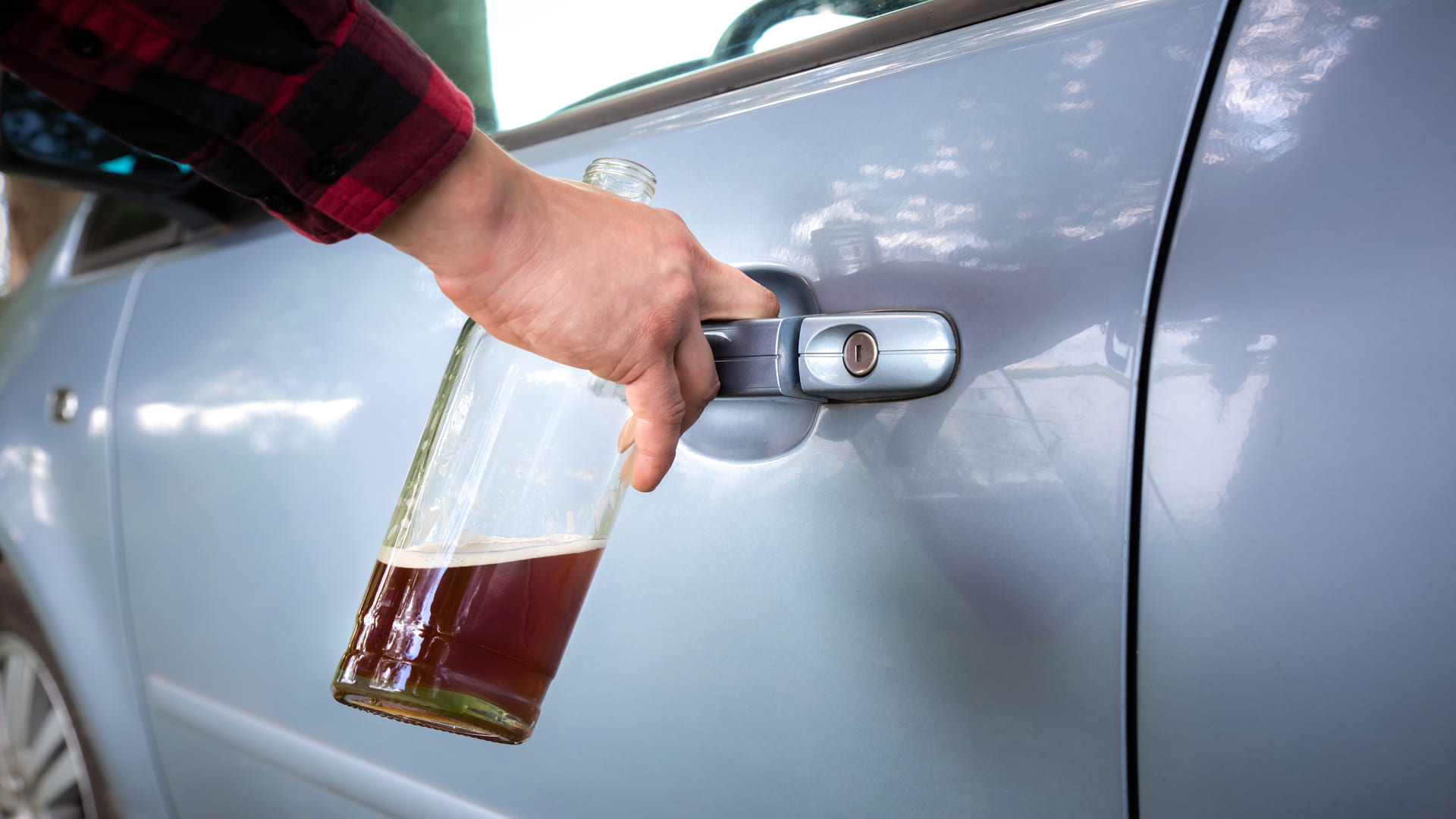
DUI Accident Settlement Calculator in California

Woman Killed in Long Beach Crosswalk Crash
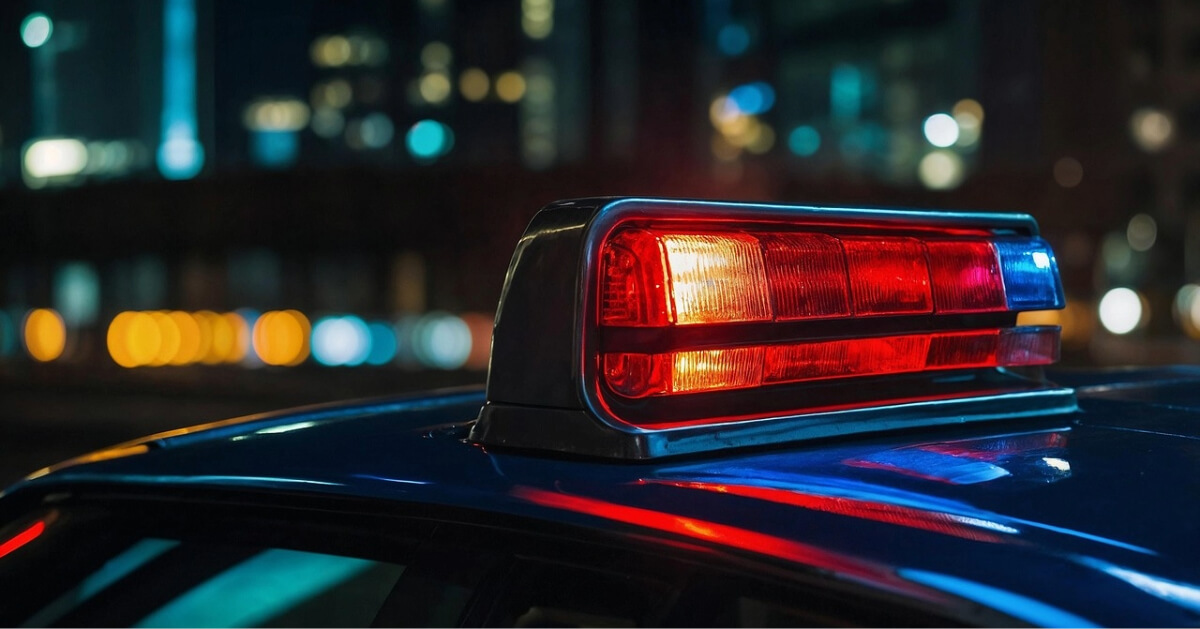
Miriam Marroquin Killed in Boyle Heights Car Crash
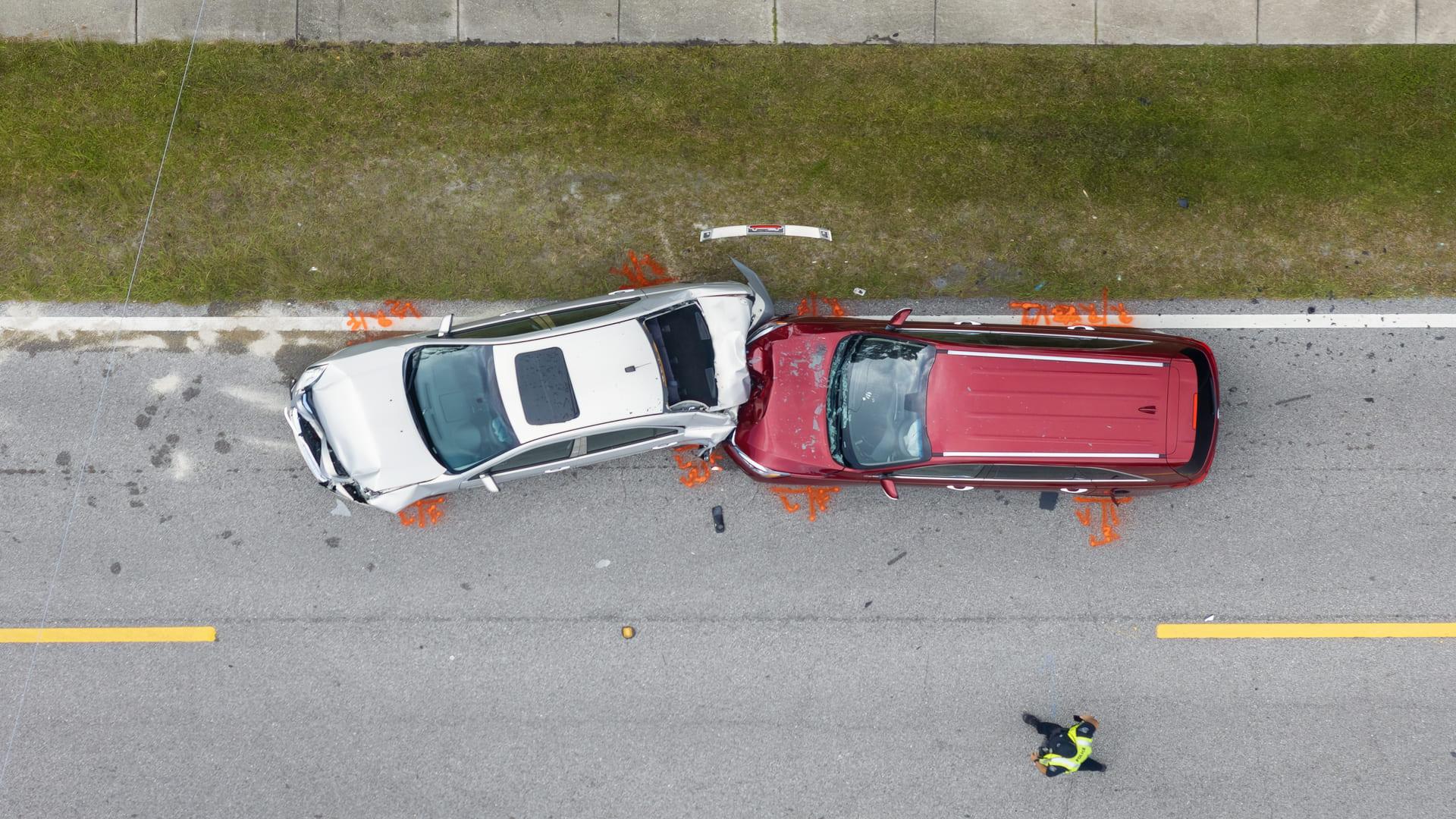
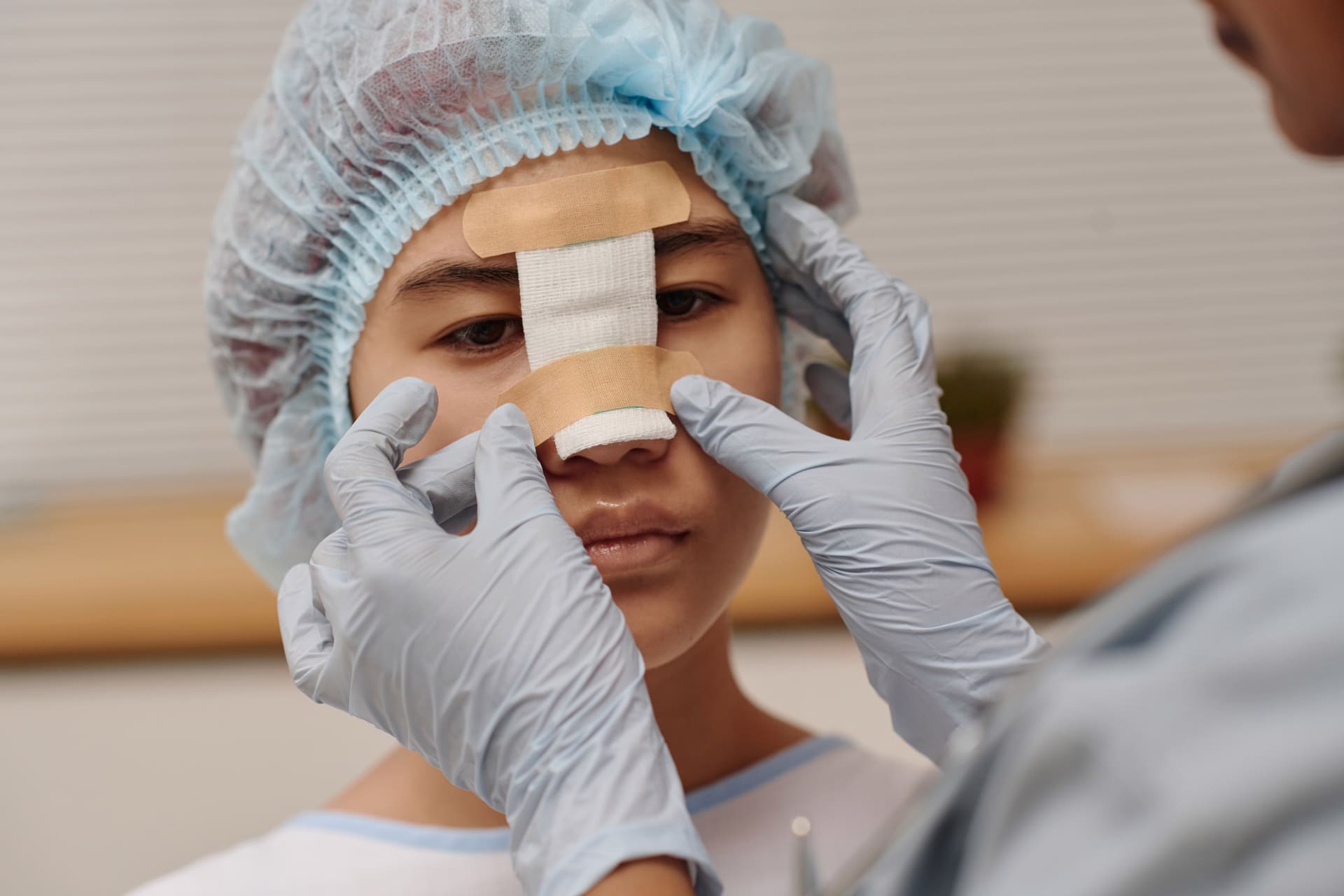
Facial Scarring Compensation Calculator in California
